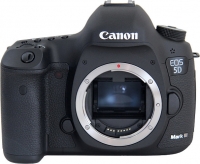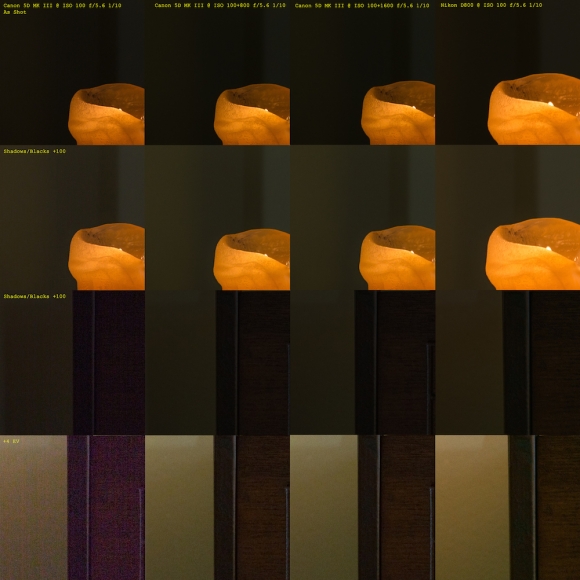Canon 5D Mark III dynamic range approaches Nikon D800 with Dual ISO hack, but not without consequences
posted Wednesday, March 5, 2014 at 3:44 PM EDT

Much to the envy of the dedicated 5D Mark III shooter, Nikon's D800 and D800E DSLRs enjoy eye-watering dynamic range, making them ideal for landscape photographers. Thanks to the friendly hackers from Magic Lantern, there's an intriguing hack to significantly boost the dynamic range of the Mark III. It works incredibly well, but there are drawbacks.
Magic Lantern's so-called 'Dual ISO' hack will sample the sensor at two different ISO settings simultaneously. These aren't separate exposures merged in post, but rather a single exposure captured at two different ISOs. In essence, Dual ISO exposes alternating line-groupings of pixels at base ISO and a second higher, user-specified ISO value.
Everyone knows that dynamic range declines at higher ISOs, so the idea is to combine the dynamic range of lower ISOs with the light sensitivity of higher ISOs, while controlling noise. It sounds too good to be true, but the claims appear to be borne out by photographer Jonathan Zdziarski's results. And since you're not combining separate exposures, you shouldn't have any problem using the technique for moving targets.
In order to demonstrate how effectively Magic Lantern's Dual ISO option boosts the 5D Mark III's high ISO dynamic range, Jonathan Zdziarski took a couple of comparison shots in dim light, with the stock Mark III and the Nikon D800. The results were not happy for the Canon, with output falling apart when exposure is pulled in post. However, the images he took with the Dual ISO exposure look almost as good as those from the Nikon D800, albeit with a little less overall dynamic range.

So if it's so great, why didn't Canon include the feature? Well, there are some significant downsides. First, while you won't need to merge separate exposures in post, you will need to convert the single interlaced frame into a uniformly exposed photo using a command line tool. Second, you're sacrificing vertical image resolution to achieve your dynamic range boost and that sacrifice has consequences, which brings us to the next drawback... which is severe aliasing. How severe? The whitepaper released by the Magic Lantern developer says "the severity of aliasing in photo mode (at full sensor resolution) should be similar to what you get in most Canon video DSLRs when recording 1080p."
If you have information for every line, just at different exposures, then why would you see bad aliasing? Well, the fact that the aliasing is lowest in the midtones should give you a hint. You see, the high ISO exposed-lines will have blown out highlights, while low ISO exposed-lines won't have useful information in the deep shadows. So highlight detail will come from one set of alternating lines, while shadow detail will come from the other set of alternating lines. Put differently, the areas you're most interested in recovering detail will be the areas most prone to aliasing.
The technique is somewhat reminiscent of Fujifilm's Super CCD EXR sensor, which is designed to allow read off from the sensor at two different ISOs. The Fuji dual ISO feature relies on the unique design of that sensor. Similarly, the whitepaper published by the Magic Lantern developer indicates the hack relies on some unique characteristics of the 7D and 5D Mark III sensors, so don't expect your friendly neighborhood hacker to hand you a magic lantern giving your favorite camera dual ISO capability.
(via The Phoblographer, Jonathan Zadziarski, additional reporting by Arthur Etchells)
